Growing ginkgo in New Zealand
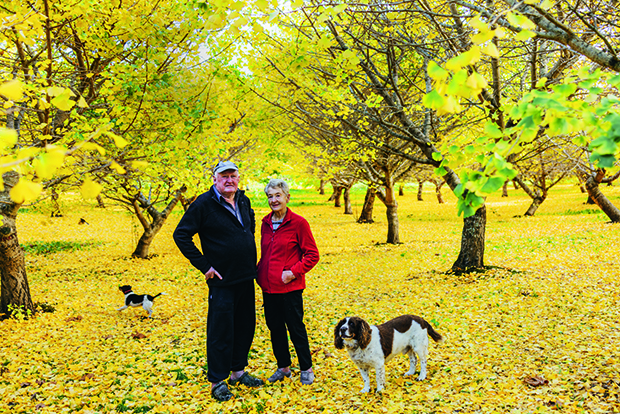
While foraging ginkgo might be relatively easy, growing the trees for their nuts is notoriously difficult and expensive, according to the owners of Bay Park, New Zealand’s largest ginkgo nut orchard.
Words: Michael Andrew Photos: Justin Aitken
Twenty five years ago, Bay of Plenty kiwifruit grower Graham Dyer observed a local Chinese family foraging under a large, old tree in downtown Tauranga. After doing some research and visiting Japan, where he and his wife Mavis have a large network, the Dyers discovered just how sought after and versatile the nuts are and decided to embark on a long-term project to produce them themselves. They planted the root stock of 2,000 locally sourced trees at six-metre spacings over two hectares. However, realising these didn’t produce a large quantity of nuts and may not be female – something the tree takes over 20 years to determine – they grafted scion wood from two species of female specimens imported from Japan in 2005. To ensure pollination, they also planted male trees throughout the orchard. Ten years later, the trees produced their first fruit.
“We get bigger nuts than the ones you forage from trees in the street,” says Graham. “It looks like a big pistachio. People use them for cooking in a whole lot of ways, stir fry, soups, desserts – there’s no lack of recipes. Mavis eats them. She puts them in a smoothie with avocado and orange juice; they’ve got great health benefits.”
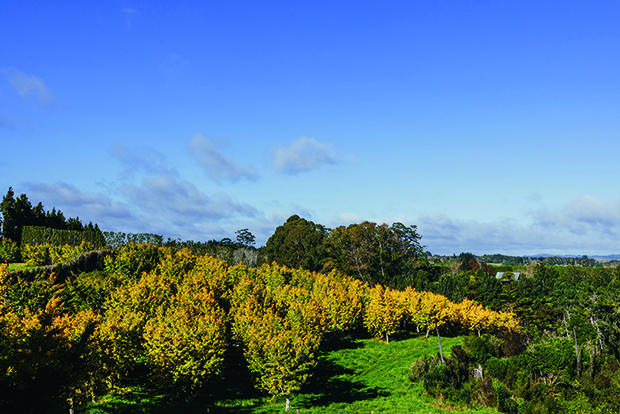
Harvesting the nuts in April and May is an intricate and labour-intensive process:
• Using a special machine imported from Germany, the fruit is shaken from the trees onto a ground cloth.
• It’s then collected and stored in bins for two to three weeks for the flesh to ripen and soften.
• The fruit goes into a mechanical washer that strips the flesh to expose the clean nut. The nuts travel along a conveyor where they are graded, then drop into a bath of water and sanitiser.
• They are then transferred to a bath where they are soaked in fungicide, drained and sealed in a lined plastic bin for cool storage. The cool store has an ozone dispenser unit installed to kill any mould spores that may be present.
• The local market nuts are dried and ready for despatch.
Because of the research and development invested in the business, Graham says his nuts are far superior to the smaller nuts imported from Asian countries. While many of the sales come from Auckland’s Asian supermarket, Jo Langley, who manages the marketing and sales for the Dyers, says they’ve recently seen interest from a range of different customers. “We’ve got nuts going out here, there and everywhere. I’ve got one guy who wants to use the fruit as an organic fertiliser.”
They’ve also seen a breakthrough in the restaurant industry. Jo says Ed Verner, head chef and owner of Auckland restaurant Pasture, has been using the nuts in his food for almost two years. “Ed said to me, ‘Jo, please don’t tell other restaurants because they’re all going to want to hook into it.’”
She says that when prepared correctly, the ginkgo nut is always well-received.
“Ed serves his customers ginkgo soup, others ginkgo salad. And he’s told me not one of them has said they don’t like the taste of ginkgo.”
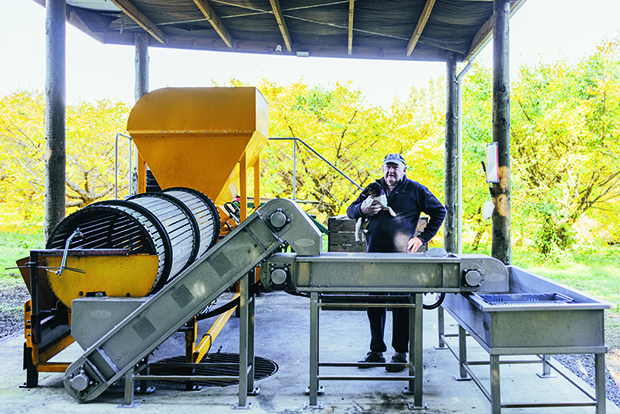
HOW TO GROW GINGKO
Having changed little in the past 200 million years and the last living species in the order Ginkgoales, ginkgo trees are considered living fossils. They’re native to China, where they’re revered by Buddhists and often grow near temples.
Extremely robust trees, they’re highly resistant to pests, diseases and pollution, which is why so many ginkgos have been planted along city streets. Their tenacity is such that six ginkgo trees living near the site of the 1945 atomic bombing of Hiroshima survived the blast when most other living organisms perished. Although charred, the trees quickly recovered and are still alive today.
They should, therefore, thrive in most New Zealand climates, provided soil is well-draining and they receive plenty of sun and water. The easiest option is to purchase a tree from a nursery, although it will still take time to know if it will end up a fruiting female or an ornamental male. The trees grow large – up to 30 metres tall and eight metres wide – so be careful where you plant them and provide plenty of space.
Alternatively, you could go for the smaller ‘jade butterfly’, which grows three metres tall and two metres wide. Water young trees two to three times per week, prune annually, and your tree could very well live for over 1,000 years.
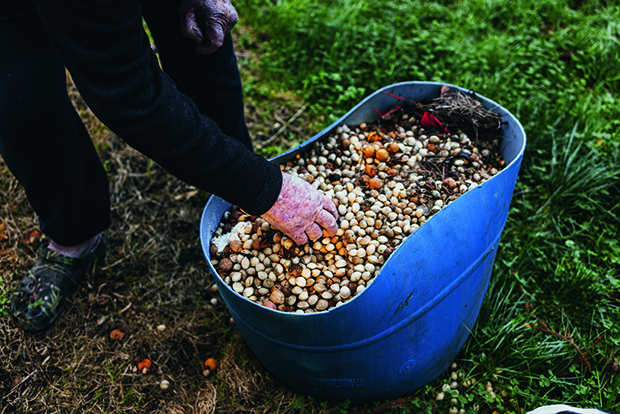
GINGKGO NUTS WITH FOOD
One way chef Helen Turnbull serves the nuts in her restaurant is with grilled ox tongue topped with ginkgo nuts, szechuan sauce and nashi pear. However, the Dyers have a range of recipes on their website: www.ginkgo.nz.
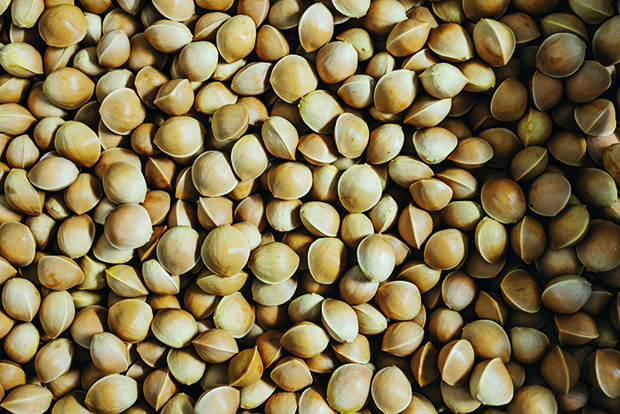
Chicken Soup with Ginkgo and Turnip
INGREDIENTS
200g chicken
40g fresh ginkgo, shell and skin removed
100g turnip
10 pcs red jujube
10 pcs goji berry (Chinese wolfberry)
15g ginger
500ml water
¾ tsp salt
METHOD
Cut the chicken into small pieces. Blanch it in boiling water and rinse it in cold water. Keep dry until use.
Remove the skin of the turnip and cut it into small pieces. Put ginger and chicken prepared in the first step together into stockpot. Add the water and cover it with a food wrapper.
Heat the stockpot one hour with medium flame. Then add goji berry, ginkgo, red jujube into the stockpot for another 30 minutes. Mix with all seasonings and serve.
Love this story? Subscribe now!
 This article first appeared in NZ Lifestyle Block Magazine.
This article first appeared in NZ Lifestyle Block Magazine.
